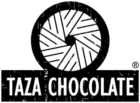How many steps does it take to make a Clinical Education Series?
Three casting sessions, 2 comprehensive script revisions, 200+ phone calls, 4 storyboards, 4 call sheets, 4 jam-packed shooting days, 86 shot set-ups, 32 full P2 cards, 192 bottles of water, 24 actors, 65 bobby pins, 12 matching scrubs, 3 nursing homes, 16 hotel rooms, 2,000+ travel miles, 1 favor from the Fire Chief, and enough Subway and Dunkin Donuts to merit a corporate sponsorship.
Several months before the first scene was slated, Charles River Media Group began collaborating on content and logistics with returning client, ABT Associates. This year, the narrative video project targeted Nursing Home Staff, a teamwork system developed by the Departments of Defense (DoD) and Health & Human Services (HHS), under contract with the Agency for Healthcare Research and Quality (AHRQ). Collaborators also included Qualidigm, ISIS/ICOR, and HMS.
The initial proposal provided to CRMG consisted of a few scripts that totaled 15 minutes in length. Over the course of the project’s development, the potential length of the videos ballooned up to 55 minutes . CRMG’s preliminary challenge was to make the content as brief, manageable, and film-friendly as possible without cutting any of the necessary medical terminology or steps that highlighted the On-Time and TeamSTEPPS systems. Working with our clients, CRMG successfully reworked the scripts to save a day and a half of production costs.
It was immensely helpful that many of our client contacts had nursing backgrounds. They were newcomers to the media production process so by maintaining a master document that detailed all proposals and revisions along the way, CRMG was able to detail the planning process, incorporate feedback and direction, and prep them for what to expect on set.
To find the right faces to bring the storylines to life, CRMG posted casting calls throughout New England and recommended actors with whom we’ve worked. As the headshots poured in, a few dozen local actors were selected to read for the various staff and resident roles. CRMG filmed these auditions in our studio to share with the client and scriptwriters in various states and, through this process, the cast was assembled quickly and efficiently.
A separate challenge was finding appropriate locations for filming. Shutting down an entire nurses’ station in a real nursing home didn’t, at first, appear to be a viable option, so we discussed about building a set in-studio and also started investigating other medical facilities that were currently available for rent. A realtor typically doesn’t want to hear that you’re only interested in renting their space for a few days, but we had some good collaborators and several vacant property prospects were available for our set builders. However, we ended up connecting with a few actual nursing homes that were extremely gracious with their facilities. We secured a location in Connecticut that was willing to give our production free-reign of their nurses’ station for a full day. For two of the scripts, we found nursing homes in Boston, one of which provided us with a beautiful new rehabilitation therapy gym.
With location photos in hand, the CRMG team drafted shot lists for each scene. Camera movements and lighting set-ups for every angle were diagrammed to determine the best use of our resources and available space. The storyboards prompted discussion and provided a common visual reference to share between departments.
Next on the to-do list was booking additional equipment and crew, as well as approving, creating, and purchasing props and wardrobe. We researched medical equipment and manufactured custom “Shady Pines Nursing Home” nametags for each character. We even arranged to have an ambulance stretcher we needed as a prop delivered to set from the Lincoln, MA Fire Chief himself.
Our shooting days begin with a crew huddle and overview of the game plan and team responsibilities. By the time actors arrive and go to hair and make-up, the grips are hard at work unpacking equipment and assisting the gaffer in assembling lights, flags, and gels in order to generate the best lighting. When shooting involves windows, multiple subjects or intricate background elements, our lighting configuration can be complex. Also, every time there is a major adjustment in camera angle, the crew is ready to go to re-light and re-dress the setting for reverse shots.
The CRMG actors were pros and hit their marks take after take. They masterfully handled complex dialogue. Our talent and crew made it through a huge amount of content in quite a short time frame. After production, we wrapped up post-production at CRMG fairly quickly and sent the videos to our clients for review, approval, and distribution.



















